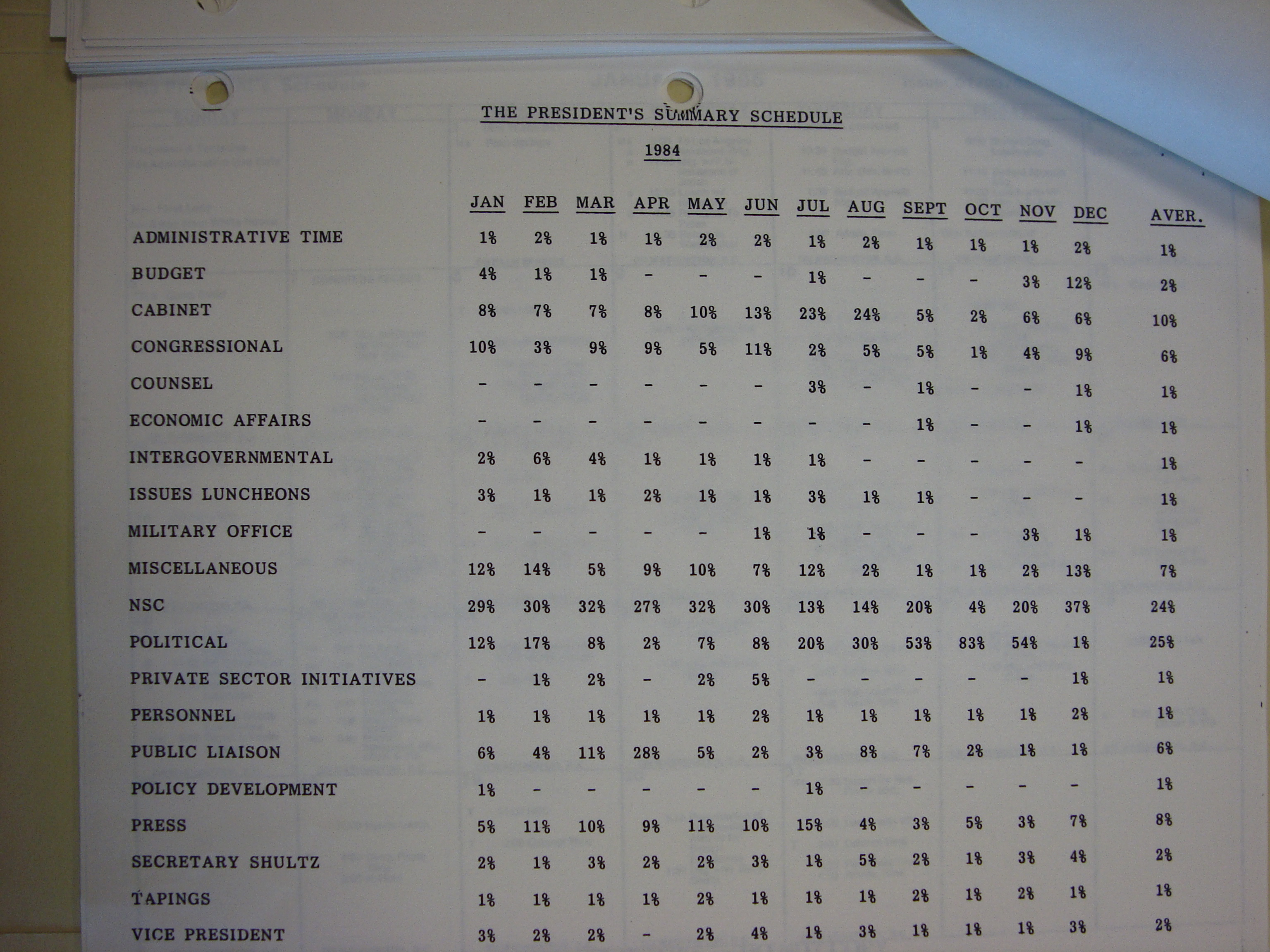As I wade into drafting the final version of my manuscript documenting the growth of the White House staff, I’ve been working my way through years of archival material I’ve accumulated from visits to 11 presidential libraries (not to mention material from scores of interviews with former White House aides). I thought it might be interesting to periodically present some of the historical documents as I come across them – I’ll try to do this every Saturday. This first installment is from the start of Ronald Reagan’s second term as president.
In January 1985, Don Regan was preparing to transition to his new job as Reagan’s chief of staff, replacing James Baker who was slated to become the Secretary of the Treasury in Regan’s stead. (Baker and Regan, both seeking new challenges, had decided to switch jobs. It does not appear that Reagan gave much thought to the switch which, with the benefit of hindsight, was probably not a good idea. Regan was ill-suited to managing the White House and was largely responsible for allowing the Iran-contra affair to take place on his watch.)
As part of the transition, Regan commissioned a number of studies regarding the various functions of the White House offices, including one from the Scheduling Office, which operated under the supervision of Michael Deaver. Deaver was part of a triumvirate of senior aides, along with Baker and Ed Meese, who served as Reagan’s primary first term advisers at the top of the White House organization. When Regan became chief of staff at the start of the second term, he essentially took on all of their jobs.
Deaver’s primary responsibility was orchestrating the public face of the Reagan presidency, which included overseeing communications, scheduling and travel. Among the many documents Deaver passed along to Regan was this one, which offered a monthly breakdown of Reagan’s schedule, organized by subject matter, for 1984. Note that the summary does not include time spent in his daily staff meetings with his senior aides. Nor does Deaver (or the aide who created it) specify how the table was constructed.

Not surprisingly, considering this was a period of escalating tension with the Soviet Union, Reagan spends about 25% of his time dealing with his NSC advisers. Much of that time occurs early in the year, as Reagan struggles to extricate the U.S. from its peacekeeping mission in Lebanon after the tragic terrorist bombing of the Marine barracks there that killed 241 American servicemen.
By the fall, however, Reagan is in full-bore campaign mode, with over 50% of his scheduled time dealing with politics in September, and more than 80% in October. (The Republican Convention that renominated Reagan took place in late August that year.) All told the time Reagan spends in political meetings for the full year equals his time spent on national security issues and together they account for about half his scheduled time. Everything else pales in significance; the third biggest chunk of time is with his cabinet (8%) and the press (8%).
This is just one year from the Reagan presidency, and it is an election year to boot, so I wouldn’t want to generalize too much from Deaver’s chart to other presidencies. But my sense is that the preoccupation with national security issues is not unusual for the modern presidency, in large part because there is no other office that can take the lead in this area. Certainly Congress has proved itself ill-suited to exercise a leadership role in the national security realm. As it turned out, however, Reagan was about to embark on perhaps his most significant foreign policy initiative – the ill-fated effort to trade arms for hostages that ultimately cost Regan his job, and almost cost Reagan his presidency.

Any idea what gets collapsed into the “misc.” category?
Kenny,
I’ve searched my notes and have found nothing on how Deaver’s assistant coded the schedule, so no, I don’t know what goes into miscellaneous. If I find anything I’ll post it.